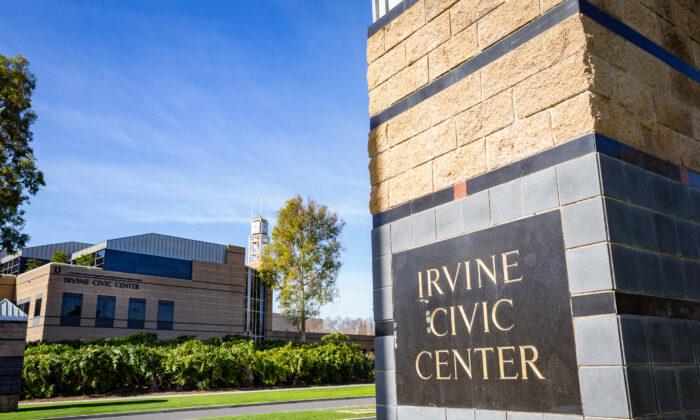As California accelerates to a clean energy future state, officials are running into a stark reality: The transition to green energy is spawning an increasing frequency of blackouts and other electricity problems. Consumers read “Flex Power Alerts” on highway and freeway signs, but have little idea how precarious the problem has become, or why it’s spreading.
The tip of the iceberg resides almost completely with the issue of renewable energy’s “intermittency,” which refers to the unpredictable and erratic electricity production by wind and solar resources whose power output fails to match California’s minute-to-minute electricity demand variations. The resulting voltage imbalances across California’s electric grid manifest as blackouts.
However, the days are numbered for these greenhouse-gas (GHG) emitting sources, ushered toward extinction as climate change sets the “clean” energy agenda. The blackout situation promises to worsen with Governor Newsom’s executive order mandating all new passenger vehicles sold in the state be zero-emission by 2035, ramping up the electric load on an already stressed system.
Local government-operated Community Choice Aggregators (CCAs, also known as Community Choice Energy), which are energy procurement agencies such as Orange County Community Choice Aggregation, Los Angeles’s Clean Power Alliance, and CCA patriarch Marin Clean Energy, are large contributors to California’s growing problem, driving ungainly legislation and leaving the state short of reliable generation as Sacramento edicts push our electric infrastructure further into jeopardy.
CCAs are growing throughout the state via their opt-out mechanism, where consumers are automatically switched into these so-called clean energy programs and then receive hybrid service—electrons from the CCAs, as well as transmission and distribution (including billing on behalf of CCAs) from the Investor Owned Utilities (IOUs). The switch is often so subtle, even covert, that many consumers are unaware that they are in a CCA program unless they scrutinize their monthly electric bill.
The opt-out feature was challenged many years ago in Sacramento with an attempt to change it to opt in (Bradford: AB 2145), but the CCA lobby complained that having to earn and build a customer base was a costly and unfair roadblock to the CCA agenda of taking over energy procurement and planning from California’s three IOUs: PG&E, Southern California Edison, and San Diego Gas & Electric.
The advent of CCAs has created a myriad of issues, including instability of California’s electric system due to lack of capitalization and ability to bring generating resources to market, jeopardizing California’s continued flow of reliable electric power.
2 Million Acres
Part of Newsom’s emergency action included suspending retirement of California’s coastal power plants that originally fell out of favor because they use once-through-cooling (OTC), drawing ocean water into their equipment to cool off components that are warmed during the production of electricity, before sending the warmed water back into the ocean.Newsom remains committed to closing PG&E’s 2,200-megawatt Diablo Canyon nuclear plant in 2024 and 2025, which is also an OTC plant. When Diablo closes, land use comparisons of wind farms throughout the U.S. reveal that a replacement wind farm occupying nearly 500,000 acres will be required, plus another 2 or 3 same-size wind farms to charge batteries (that are currently technologically incapable of operating as needed to keep California’s power flowing over the course of several days, such as when the wind stops blowing).
Where are those 2 million acres? This is not to disregard the multiple duplicates of similar wind farms and solar farms that will be required as California forges ahead with its green energy vision, as California closes gas-fired generation because of GHG emissions and OTC concerns.
Shooting Fish in a Barrel—the $370 Million Secret
It has been said that the fossil-fired industry’s greatest customer is the clean energy industry. Green cannot fully carry the electric grid’s demand without baseload generation (fossil-fired and nuclear) spinning in the background, ready to pick up slack when clouds cast shadows over solar panels, or when the wind stops blowing. Evolving battery technology is cited as the savior to renewables’ intermittency problems, yet those in-development technologies don’t exist on a commercial scale nor do they have an in-service track record.That reality is already seeping into CCAs ... without a whisper to outsiders. The collective conscience of California has, to a great extent, embraced clean energy with unquestioned acceptance in the name of climate change. Insiders know that tipping that apple cart would needlessly upset the protected incomes of energy developers, lawyers, lobbyists, consultants, contractors, and CCA staff leaders—who reap financial windfalls from California’s new energy order, lubricated in large part by the billions of dollars that collectively flow through the state’s 24 (and growing) CCAs each year.
Green electricity champion, Marin Clean Energy (MCE), was California’s first CCA to successfully launch in 2010. MCE is cited as a glowing success to which all other CCAs should aspire. Ironically, part of that success is MCE’s stealth ability to control and recast what is happening.
- run MCE’s entire electric load throughout its core Marin County service area for 9 years, or alternatively; [1]
- run MCE’s entire electric load throughout its Marin, Napa, Solano, and Contra Costa counties service area for 1.5 years; [2]
- either of which results in 7.6 billion pounds of GHG emissions. [3]
The Writing Was on the Wall
In 2015, MCE CEO Dawn Weisz executed a gas-fired power contract in the midst of claiming to ramp up MCE’s clean energy content. Weisz said the gas-fired power would “reduce greenhouse gas emissions” and “support local jobs,” the same promises (pdf) made years earlier when lobbying on behalf of renewables while telling everyone MCE would unhook from dirty and dangerous fossil fuels (pdf).Brown power is a required component of electric reliability. That truism combined with the reality of clean energy’s dirty supporting infrastructure, including the manufacturing and disposal of batteries, solar panels, and windmills, needs to be acknowledged and embraced. There are no free lunches. Otherwise we’re self-deceived by a very expensive and wasteful green energy illusion.
[ 1 ] MCE’s Marin-based electric load = 896,393 MWh, per Marin Energy Authority Joint Powers Agreement, Amendment No. 15, dated November 19, 2020. At assumed $46 per megawatt-hour (MWh), $370,676,880 buys 8,058,193 MWhs. 8,058,193 / 896,393 = 8.99 years.
[ 2 ] MCE’s total annual electric loads may be found in its calendar year 2020 Power Source Disclosure, Schedule 1, filed with California Energy Commission: Light Green 5,070,881 MWh + Deep Green 190,816 MWh + Local Sol 513 MWh = 5,262,210 MWh in 2020. 8,058,393 / 5,262,210 = 1.5 years.
[ 3 ] $370,676,880 for system power contracts. Average system power price throughout the year is about $46 per megawatt-hour (MWh). Each MWh has a standard emission rate, per CARB regulation, of 943.58 lbs CO2/ MWh. Therefore, ($370,676,880 / $46 per MWh) x 943.58 lbs CO2 / MWh = 7,603,549,792 lbs of greenhouse gas emissions.





